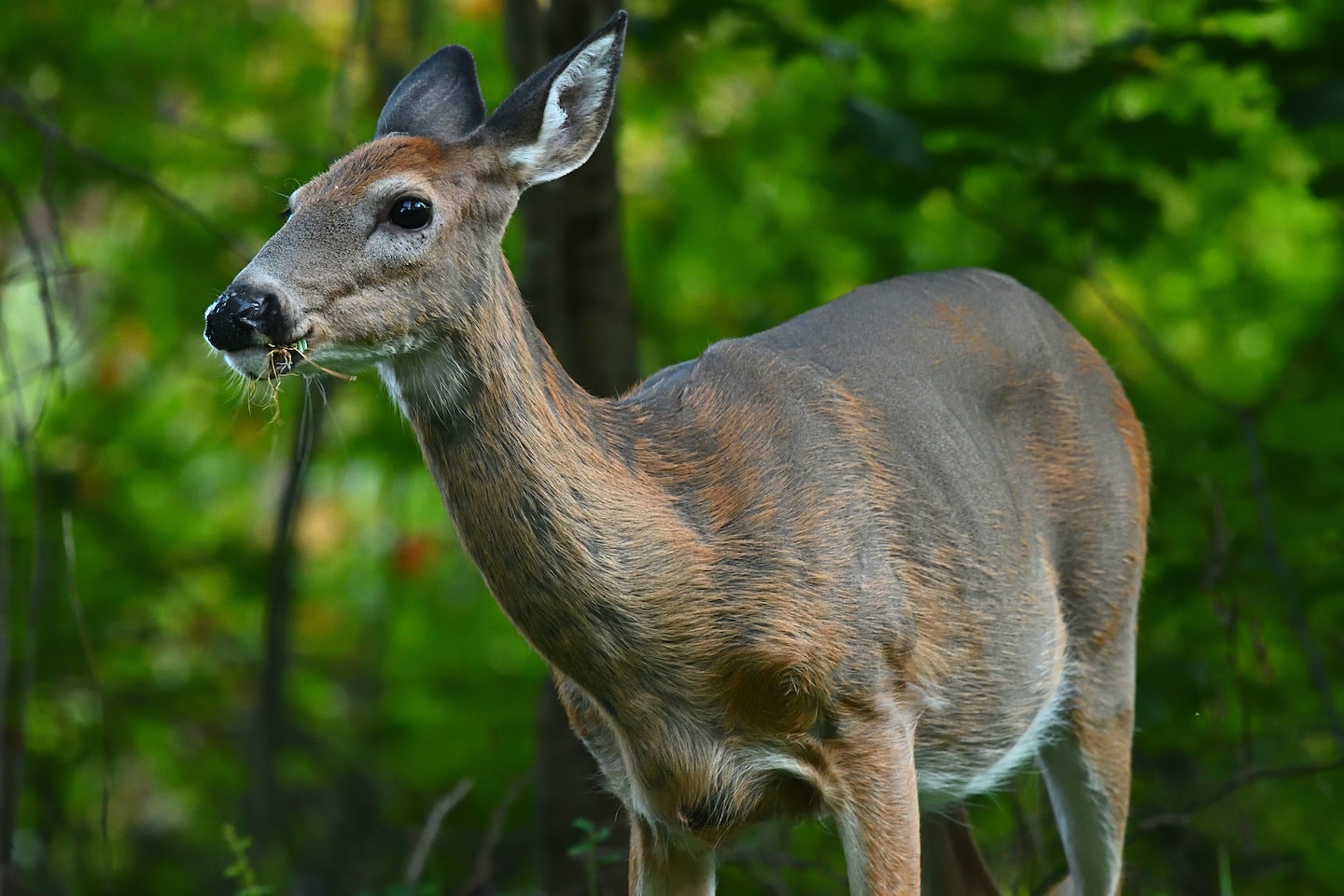Of course, for deer and other mammals that use the third option, a change of wardrobe is in order.
Many animals change color when winter comes. Snowshoe hares, Arctic foxes and some weasels are examples of creatures that are gray or brown during the summer but switch to stark-white colors when the temperature drops. One reason for this is that the new look helps them hide from predators as well as the prey that they hunt.
But you don’t have to go beyond the Arctic Circle to witness drastic animal coat changes. White-tailed deer are reddish-brown in the summertime, says Fleegle, but when the days start getting shorter, their bodies switch to a light-gray in preparation for winter. While this helps the animals blend in with their changing backgrounds, there’s a much more important shift taking place.
Deer actually have two layers of fur, says Fleegle. The top coat is full of what scientists call “guard hairs,” which are longer and sometimes hollow. But beneath those, there’s a much thicker layer of underfur.
“That’s really what gives a deer’s coat its insulative value,” says Fleegle. “The underfur is five times as dense as those guard hairs.”
In fact, Fleegle says a white-tailed deer’s undercoat is thicker than sheep wool. “That underfur traps a layer of air, and that air gets warmed by the body,” she explains. “And that’s what keeps the deer warm in the wintertime.”
When the world starts warming up again in the spring, the deer shed all their underfur, because keeping it would make them run the risk of overheating — which can be just as dangerous as freezing to death.
“A deer’s summer coat does not have underfur,” says Fleegle. “So there’s a lot of airflow, which is basically deer air-conditioning.”
Deer shed so much fur in the springtime, that you might see clumps of it in the woods if you go for a hike. “We call it ‘when deer blow their coats,’ ” says Fleegle, “because it looks like their inner coat has been blown apart.”
